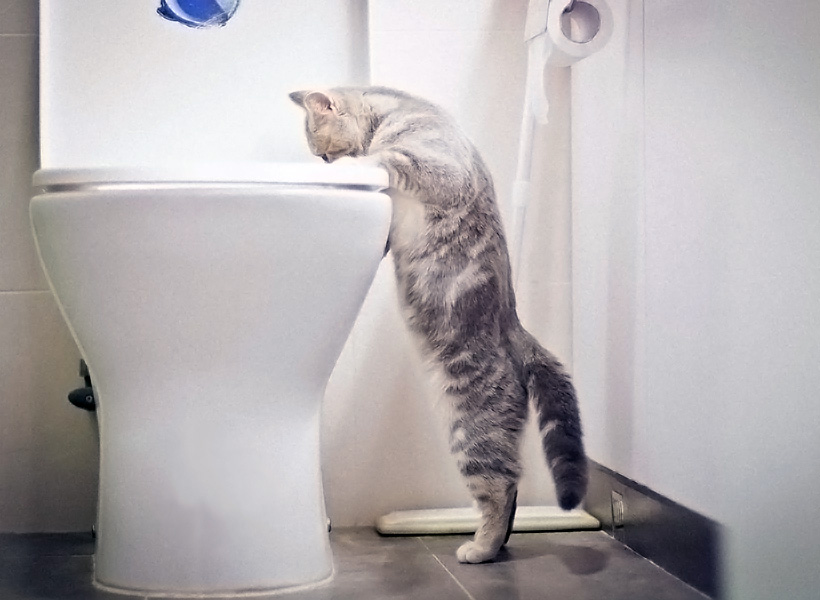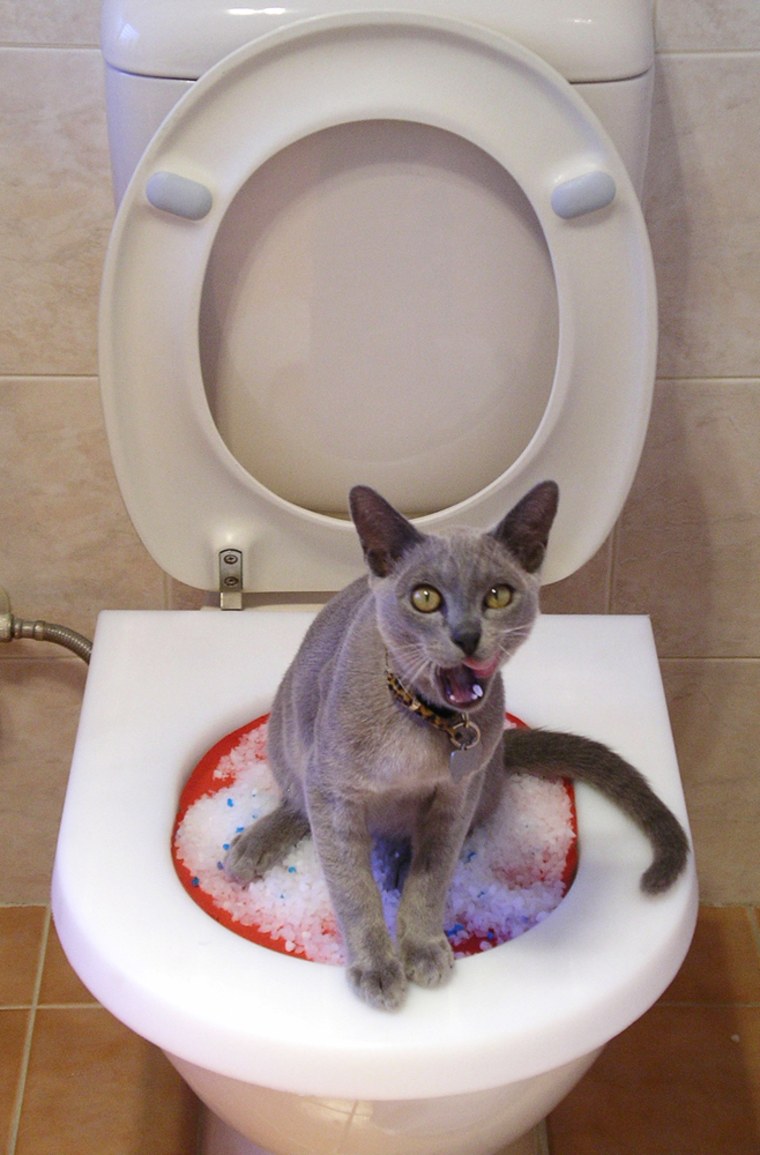Why You Ought to Never Dispose of Animal Waste Down the Toilet
Why You Ought to Never Dispose of Animal Waste Down the Toilet
Blog Article
Are you on the lookout for suggestions about Why you should never flush dog poop down the toilet?

When it pertains to taking care of waste, especially animal waste, many people often resort to the convenient option of flushing it down the commode. Nonetheless, this relatively simple service can have serious effects for the atmosphere and public health. In this short article, we'll explore why flushing pet waste down the bathroom is a poor idea and give alternative techniques for appropriate disposal.
Intro
Correct waste disposal is important for maintaining environmental sustainability and public health. While it might appear safe to flush animal waste down the toilet, it can result in numerous issues, both for the atmosphere and human health.
Threats of flushing animal waste
Environmental influence
Flushing pet waste introduces damaging bacteria and virus into rivers, which can negatively influence aquatic ecosystems. These microorganisms can infect water sources and injury marine life, interfering with fragile ecosystems.
Public health issues
Pet waste contains dangerous microorganisms such as E. coli and Salmonella, which can pose severe wellness risks to humans. Flushing pet waste down the commode can contaminate water supplies, resulting in the spread of illness and infections.
Alternatives to flushing
Rather than purging pet waste down the bathroom, there are a number of alternate disposal techniques that are more eco-friendly and sanitary.
Composting
Composting animal waste is an environmentally friendly way to dispose of it. By composting, raw material is broken down into nutrient-rich dirt, which can be made use of to fertilize yards and plants.
Land fill disposal
Taking care of animal waste in a land fill is one more alternative. While not as environmentally friendly as composting, it is a more secure alternative to flushing, as it stops the contamination of water sources.
Pet garbage disposal systems
There are specialized family pet garbage disposal systems available that safely and hygienically deal with animal waste. These systems typically utilize enzymes to break down waste and eliminate smells.
Actions to appropriate animal waste disposal
To make sure correct disposal of animal waste, comply with these steps:
Scooping and bagging waste
On a regular basis scoop and bag pet waste making use of naturally degradable bags. This prevents waste from polluting the setting.
Making use of designated waste containers
Dispose of bagged pet waste in marked waste containers, such as garden compost containers or land fill containers. Prevent flushing it down the toilet whatsoever costs.
Cleansing can and animal areas routinely
Routinely tidy can and animal locations to avoid the buildup of waste and microorganisms. Use pet-safe cleansing products to keep hygiene.
Advantages of proper disposal techniques
Adopting appropriate disposal click here methods for animal waste supplies several advantages:
Reduced environmental pollution
Appropriate disposal approaches reduce the threat of environmental pollution, safeguarding rivers and ecosystems from contamination
Lessened threat of water contamination.
By staying clear of flushing animal waste down the bathroom, the danger of water contamination is significantly reduced, protecting public health.
Enhanced sanitation and health
Correct disposal approaches advertise far better hygiene and health, developing a much safer atmosphere for both human beings and animals.
Conclusion
Finally, purging pet waste down the commode is hazardous to the atmosphere and public health. By adopting different disposal methods and adhering to correct waste management practices, we can minimize the negative influence of pet waste and contribute to a cleaner, much healthier planet.
Why You Should Never Flush Cat Poop Down the Toilet
A rose by any other name might smell as sweet, but not all poop is created equal. Toilets, and our sewage systems, are designed for human excrement, not animal waste. It might seem like it couldn’t hurt to toss cat feces into the loo, but it’s not a good idea to flush cat poop in the toilet.
First and foremost, assuming your cat uses a litter box, any waste is going to have litter on it. And even the smallest amount of litter can wreak havoc on plumbing.
Over time, small amounts build up, filling up your septic system. Most litter sold today is clumping; it is made from a type of clay that hardens when it gets wet. Ever tried to scrape old clumps from the bottom of a litter box? You know just how cement-hard it can get!
Now imagine just a small clump of that stuck in your pipes. A simple de-clogger like Drano isn’t going to cut it. And that means it’s going to cost you big time to fix it.
For an amusing, graphic tale of what happens when you flush too much litter down the toilet all at once, take a few minutes to read Gene Weingarten’s 2017 Washington Post column “So that’s what happens when you flush cat litter down the toilet.”
Parasitic Contamination
Believe it or not, your healthy kitty may be harboring a nasty parasite. Only cats excrete Toxoplasma in their feces. Yet it rarely causes serious health issues in the cats that are infected. Most people will be fine too if infected. Only pregnant women and people with compromised immune systems are at risk. (If you’ve ever heard how women who are expecting are excused from litter cleaning duty, Toxoplasma is why.)
But other animals may have a problem if infected with the parasite. And human water treatment systems aren’t designed to handle it. As a result, the systems don’t remove the parasite before discharging wastewater into local waterways. Fish, shellfish, and other marine life — otters in particular — are susceptible to toxoplasma. If exposed, most will end up with brain damage and many will die.
Depending on the species of fish, they may end up on someone’s fish hook and, ultimately on someone’s dinner plate. If that someone has a chronic illness, they’re at risk.
Skip the Toilet Training
We know there are folks out there who like to toilet train their cats. And we give them props, it takes a lot of work. But thanks to the toxoplasma, it’s not a good idea.
Leave the toilet to the humans, and accept your future litter cleaning duty.

Routinely tidy can and animal locations to avoid the buildup of waste and microorganisms. Use pet-safe cleansing products to keep hygiene.
Advantages of proper disposal techniques
Adopting appropriate disposal click here methods for animal waste supplies several advantages:
Reduced environmental pollution
Appropriate disposal approaches reduce the threat of environmental pollution, safeguarding rivers and ecosystems from contamination
Lessened threat of water contamination.
By staying clear of flushing animal waste down the bathroom, the danger of water contamination is significantly reduced, protecting public health.
Enhanced sanitation and health
Correct disposal approaches advertise far better hygiene and health, developing a much safer atmosphere for both human beings and animals.
Conclusion
Finally, purging pet waste down the commode is hazardous to the atmosphere and public health. By adopting different disposal methods and adhering to correct waste management practices, we can minimize the negative influence of pet waste and contribute to a cleaner, much healthier planet.
Why You Should Never Flush Cat Poop Down the Toilet
A rose by any other name might smell as sweet, but not all poop is created equal. Toilets, and our sewage systems, are designed for human excrement, not animal waste. It might seem like it couldn’t hurt to toss cat feces into the loo, but it’s not a good idea to flush cat poop in the toilet.
First and foremost, assuming your cat uses a litter box, any waste is going to have litter on it. And even the smallest amount of litter can wreak havoc on plumbing.
Over time, small amounts build up, filling up your septic system. Most litter sold today is clumping; it is made from a type of clay that hardens when it gets wet. Ever tried to scrape old clumps from the bottom of a litter box? You know just how cement-hard it can get!
Now imagine just a small clump of that stuck in your pipes. A simple de-clogger like Drano isn’t going to cut it. And that means it’s going to cost you big time to fix it.
For an amusing, graphic tale of what happens when you flush too much litter down the toilet all at once, take a few minutes to read Gene Weingarten’s 2017 Washington Post column “So that’s what happens when you flush cat litter down the toilet.”
Parasitic Contamination
Believe it or not, your healthy kitty may be harboring a nasty parasite. Only cats excrete Toxoplasma in their feces. Yet it rarely causes serious health issues in the cats that are infected. Most people will be fine too if infected. Only pregnant women and people with compromised immune systems are at risk. (If you’ve ever heard how women who are expecting are excused from litter cleaning duty, Toxoplasma is why.)
But other animals may have a problem if infected with the parasite. And human water treatment systems aren’t designed to handle it. As a result, the systems don’t remove the parasite before discharging wastewater into local waterways. Fish, shellfish, and other marine life — otters in particular — are susceptible to toxoplasma. If exposed, most will end up with brain damage and many will die.
Depending on the species of fish, they may end up on someone’s fish hook and, ultimately on someone’s dinner plate. If that someone has a chronic illness, they’re at risk.
Skip the Toilet Training
We know there are folks out there who like to toilet train their cats. And we give them props, it takes a lot of work. But thanks to the toxoplasma, it’s not a good idea.
Leave the toilet to the humans, and accept your future litter cleaning duty.

I found that write up on Why you should never flush dog poop down the toilet when doing a lookup on the internet. Be sure to take a moment to promote this write-up if you appreciated it. We appreciate reading our article about .
Schedule A Service Report this page